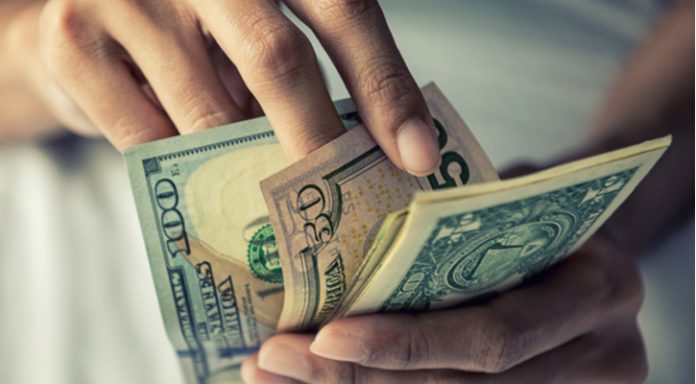A confident Federal Reserve and a weaker euro lifted the dollar in the previous week. Meanwhile lacklustre UK economic data pulled the pound lower. As a result, the pound US dollar exchange rate concluded last week almost 1% lower at US$1.3277.
| What do these figures mean? |
|---|
|
When measuring the value of a pair of currencies, one set equals 1 unit and the other shows the current equivalent. As the market moves, the amount will vary from minute to minute. For example, it could be written: 1 GBP = 1.28934 USD Here, £1 is equivalent to approximately $1.29. This specifically measures the pound’s worth against the dollar. If the US dollar amount increases in this pairing, it’s positive for the pound. Or, if you were looking at it the other way around: 1 USD = 0.77786 GBP In this example, $1 is equivalent to approximately £0.78. This measures the US dollar’s worth versus the British pound. If the sterling number gets larger, it’s good news for the dollar. |
The Bank of England will be in focus later this week, but first Brexit developments are likely to capture investors’ attention. Last week UK Prime Minister Theresa May managed to push the Brexit Bill through Parliament, with the help of some concessions to the Remainers in her party. These concessions included further discussions with rebels on the amount of say MP’s have in the case that the there is no Brexit deal.
The amendment that was drawn up as part of the concession to avoid rebels voting against the Brexit Bill in Parliament was changed at the last minute. Rebels now consider it valueless. The Bill with the amendment has been returned to the House of Lords and will come back to the House of Commons this week. These Remainers have said that they will rebel against the Bill on its return. Should this be the case, the Theresa May’s authority will be thrown into doubt again, making it more likely that May will lose the confidence of her party. Increased political risk could weigh on demand for the pound.
| How does political risk have impact on a currency? |
|---|
| Political risk drags on the confidence of consumers and businesses alike, which means both corporations and regular households are then less inclined to spend money. The drop in spending, in turn, slows the economy. Foreign investors prefer to invest their money in politically stable countries as well as those with strong economies. Signs that a country is politically or economically less stable will result in foreign investors pulling their money out of the country. This means selling out of the local currency, which then increases its supply and, in turn, devalues the money. |
Fed Speakers & Trade Concerns To Influence Dollar
After a busy week last week for the US dollar, which saw it increase in value against its peers, this week the economic calendar is quieter for the dollar. Friday is the only piece of high impacting data. Before then there are several speeches from Federal Reserve policy makers which could offer some support to the dollar, given the strong support from the central bank towards a steeper path of interest rate rises.
| Why do raised interest rates boost a currency’s value? |
|---|
| Interest rates are key to understanding exchange rate movements. Those who have large sums of money to invest want the highest return on their investments. Higher interest rate environments tend to offer higher yields. So, if the interest rate or at least the interest rate expectation of a country is relatively higher compared to another, then it attracts more foreign capital investment. Large corporations and investors need local currency to invest. More local currency used then boosts the demand of that currency, pushing the value higher. |
Also catch investors eye will be increasing trade tensions. On Friday, US President Trump announced $50 billion worth of trade tariffs on Chinese imports. China was quick to respond with measures of its own. These tit for tat moves are increasing the possibility of a trade war which could hit global trade and economies, potentially boosting the dollar.
|
This article was initially published on TransferWise.com from the same author. The content at Currency Live is the sole opinion of the authors and in no way reflects the views of TransferWise Inc. |





